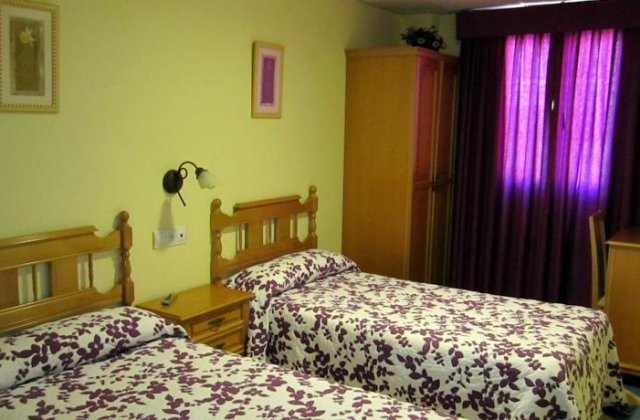Built on the hillside that rises up from the estuary, it is easy to feel like everywhere in Ribadeo is uphill.
In the city center, the Convento de Santa Clara (15th century with 18th century cloister) is the cornerstone of the church, while the 1910 Casa de Indianos known as the Torre dos Moreno is a mighty monument to capitalism; a plan to rescue it is underway.
If you are staying in the municipal albergue, consider a walk (3.5km round trip) out to the Ribadeo lighthouse (Illa Pancha) along the coastal road adjacent to the albergue. Along the way is the Castillo de San Damián which sometimes holds local art exhibitions.
The number one visited place in Ribadeo (and in the top five for all of Galicia) isn’t in Ribadeo at all; the natural rock formations along the coast known as As Catedrais (the cathedrals) are 14km to the west along the coast. If you have the opportunity to share a taxi with other pilgrims it would be a pity to miss the opportunity but google ‘tide calendar’ before you go because if it is high there is little sense in going.
Notice: The scallop shells in Galicia are not installed with an orientation towards Santiago and having come from Asturias where they are it might be a bit confusing. Just remember to follow the arrow and ignore the shell.
History: Ribadeo has had an on-again/off-again relationships with the camino for centuries. Prior to the bridge being built the broad river hear mean a difficult river crossing. Many pilgrims made the crossing but many more turned south to follow the path of least resistance, a much shorter bridge crossing at Santiago de Abres. The bridge we see today eliminated the risk of crossing and since 1987 the southern option has fallen out of favor. However, there is a local movement to rejuvenate it and by the time you get to the Galician border you may well see alternatives to do so.
The Camino: The camino through Ribadeo has been re-routed in recent years and now follows a route down to the waterfront and then back up. Of course, it is still possible to go the old way and avoid the elevation change. If that suits you, turn right at the first big intersection after you pass under the bridge into town. It is the Avenida de Leopoldo Calvo Sotelo and the official camino is across the road to the left. If you turn right you can follow old arrows through town.
At the end of town both options rejoin on the Rúa de San Lazaro and before long you are back in the countryside. Such is the case for most of the walking through Galicia; on a few occasions you will walk along the asphalt road but they are quiet country roads. The first of them is the LU-5207 which you will dance around as you enter Vilela.












